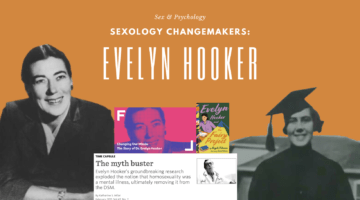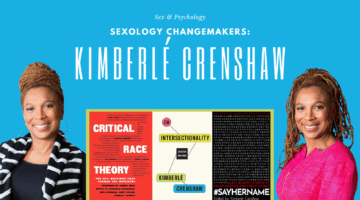What I Learned By Attending A Sex Conference
November 20, 2013 by Justin Lehmiller

This past weekend, I attended the annual meeting of the Society for the Scientific Study of Sexuality (SSSS). Although I have been a sex educator and researcher for quite some time, I had never been to an actual sex conference before this and, honestly, I wasn’t quite sure what to expect. However, I am incredibly glad that I went and I will definitely be returning!
The theme of this year’s convention was “Connections: Interdisciplinary Perspectives in Sexuality.” The organizers promised to bring together folks from different academic and professional backgrounds to generate an “intercourse of ideas.” And they delivered. There were psychologists and sociologists, counselors and sex therapists, physicians, employees from sex shops, and so much more. Believe it or not, I even attended a talk by a landscape architect who discussed how the design of our sexual spaces impacts how we express our sexuality [Cunningham & Cunningham]. One of the most fascinating parts of that talk was the discussion of Japanese “love hotels,” which are exactly what they sound like—places where couples can check in for a short stay to get some action. We even saw pictures of some of the rooms in a typical love hotel, which included a sex dungeon, a room that mimicked the appearance of being on a moving train, and even the obligatory Hello Kitty! themed room. There’s something for everyone in a love hotel, which may explain why Japan has an estimated 37,000 such establishments!
But that’s not all I learned. Below are a few other titillating highlights:
-In a study of women who had experienced group sex at least once, the majority of those women reported initiating the event and said they were happy they had done it. I thought this was particularly fascinating because the cultural stereotype is that women only have three(or more)somes when a man “talks them into it”; in reality, however, there are a number of women who desire group sex and take the initiative to seek it out. [Schick, Bell, Neal, Dodge, Van Der Pol, & Fortenberry]
-Robert Epstein made a great analogy that some people’s tendency to view everyone as being either gay or straight is like pretending that there are only two heights: short vs. tall. His point was that there is a lot of variability and that trying to measure sexual orientation in terms of just a couple of preset categories (which is how many researchers go about this) causes us to miss out on a lot of important information. Epstein presented some fascinating data from an online survey of over 50,000 participants showing that when you measure sexuality on a continuum (a la the classic Kinsey Scale), you see enormous variation, even when you look only at persons who identify with the same sexual identity label. He argues that this variation could be incredibly meaningful for helping us to better understand human sexual behavior.
-In a study of college students’ porn watching habits, 7.3% of participants reported never having watched porn before (I would have guessed that this number might actually be a little lower!). This research also found that more frequent porn viewing was correlated with having more sexual partners, but it was not linked to whether participants had sex without condoms. Other data presented at this conference yielded a similar conclusion: the overall quantity of porn people consume is not associated with whether they engage in unprotected sex. [Humphreys & Harrigan]
-Animal studies have shown that we can condition them to like almost anything just by pairing it with sexual activity, including the “smell of death.” In one study, some male rats were repeatedly exposed to the scent of rotting flesh (known as “cadaverine”) while mating with a female rat; other male rats were not exposed to the smell. Later, the male rats were put in cages with a piece of wood that had been scented with cadaverine. Those rats that were not previously exposed to the scent during mating avoided the wood and did everything they could to get away from it. In contrast, the rats that were previously exposed to cadaverine during sex went over and sniffed and chewed on the wood. These findings fit nicely with other research I’ve discussed on this site about how fetishes and other unusual sexual interests may largely represent learned associations. If you pair something with sexual pleasure enough times, eventually, you will come to like it. [Young & Alexander citing Pfaus, Theberge, & Kippin, 2003]
I could go on and on, but you get the point—there was some truly fascinating research presented here. But the value of this conference wasn’t just in learning about the science of sex—there was also a lot to be gained from getting to know the other attendees. For example, I had a really interesting conversation with a professor who teaches human sexuality in a seminary. That certainly wasn’t something I expected to happen at a conference like this, but I’m really glad that it did. The diversity in people and ideas combined with the exciting research made this a truly valuable and eye-opening educational experience and one that I hope to repeat next year.
Want to learn more about The Psychology of Human Sexuality? Click here for a complete list of articles or like the Facebook page to get articles delivered to your newsfeed.
Image Source: iStockphoto.com
You Might Also Like:

Dr. Justin Lehmiller
Founder & Owner of Sex and PsychologyDr. Justin Lehmiller is a social psychologist and Research Fellow at The Kinsey Institute. He runs the Sex and Psychology blog and podcast and is author of the popular book Tell Me What You Want. Dr. Lehmiller is an award-winning educator, and a prolific researcher who has published more than 50 academic works.
Read full bio >

